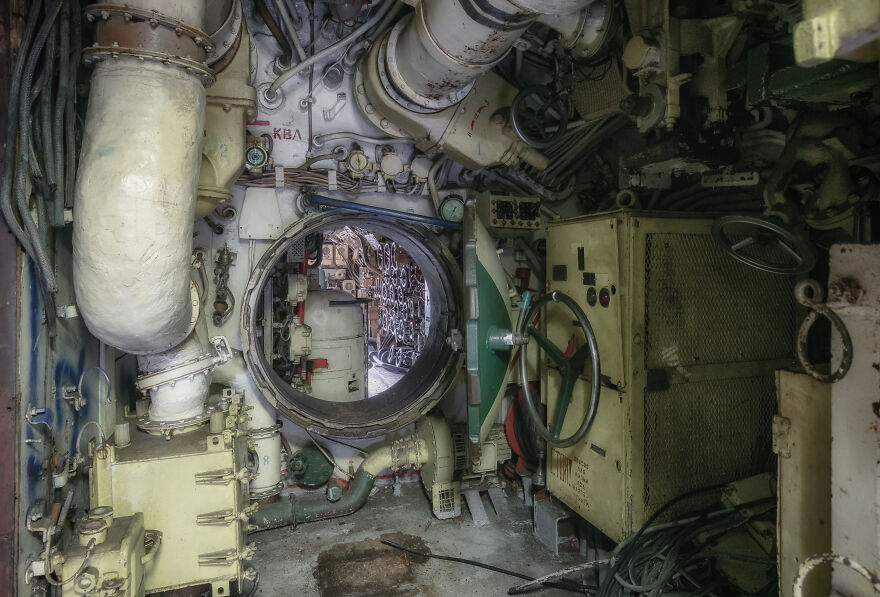Fantastic Photos Show What An Abandoned Soviet Submarine Looks Like From Inside
A passage between compartments

According to an explorers duo: “We are two. Him and Her. A man and a woman, husband and wife. We are open and adventurous. We are not athletes and far from the best photographers. We are searching, we are learning, we are developing, we travel, we look for adventures. And here they are – abandoned, decayed, derelict, lost and forgotten places, urban exploration, city suburbs… call it as you want .. but! As soon as you start exploring, you realize that there is a whole world of abandoned places.
It is different, it does not look real, there is something that is hidden, something that will never become public … secrets, memories, and the irreversibility of being.We do have a thirst for risk and boundless curiosity to find out what is hiding there, further, behind seven seals and locks … and we want to escape from the harsh pragmatic reality, to hide, to feel that we touch the past, to open the curtain of dust, to turn back time and to tell you the stories..”
More: Facebook, Instagram h/t: boredpanda
The torpedo compartment

“Having explored abandoned places for quite some time, sometimes it seems that we have seen everything. But this time, it was not the case. We knew it would be special, but we couldn’t imagine that it would be THAT special. During this exploration, under the heavy rain, wind, and cold… there was only one thing that made us feel warmer—the inner voice with “we all live in a yellow submarine, yellow submarine…”
This particular submarine began its career in 1965. It served in the Northern Fleets, Baltic waters, and the Mediterranean, based in Egypt for some years.”
The torpedo tubes

“Submarines of project 641, or Foxtrot, according to the classification of NATO in Soviet times, were recognized as very successful. They were designed for long-distance travel and patrolling the ocean, equipped with new torpedo tubes. The first submarine of the Foxtrot class became part of the Soviet fleet in 1958.
There were 75 submarines built in total, with 17 of them serving in the navy of Poland, Cuba, India, and Libya. The project had already become morally and technically outdated by the time the last submarine was completed in 1983. With the advent of nuclear submarines with no range limitations, Project 641 moved into the category of simply short-range boats.
78 people could squeeze in, work, and live there for several months. Don’t ask me how! Living conditions on board would be rather difficult, there was not enough space for every person, and the captain was the only one who had a cabin.”
Tight door between compartments
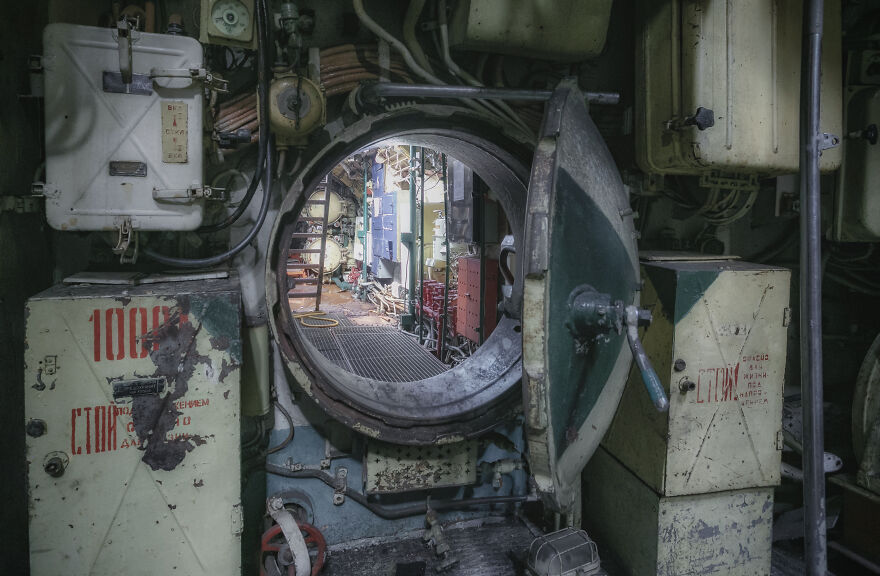
“Entering the submarine aft, we got down into an empty compartment with four torpedo tubes. Passing through a narrow way along with the multiple sets of arrows and buttons, we got to the compartment with a diesel engine, a radio receiver where encrypted messages could once be sent and received, a central information point, RADAR and SONAR sets, as well as an attack periscope that was used to search and triangulate probable targets.”
Central information point
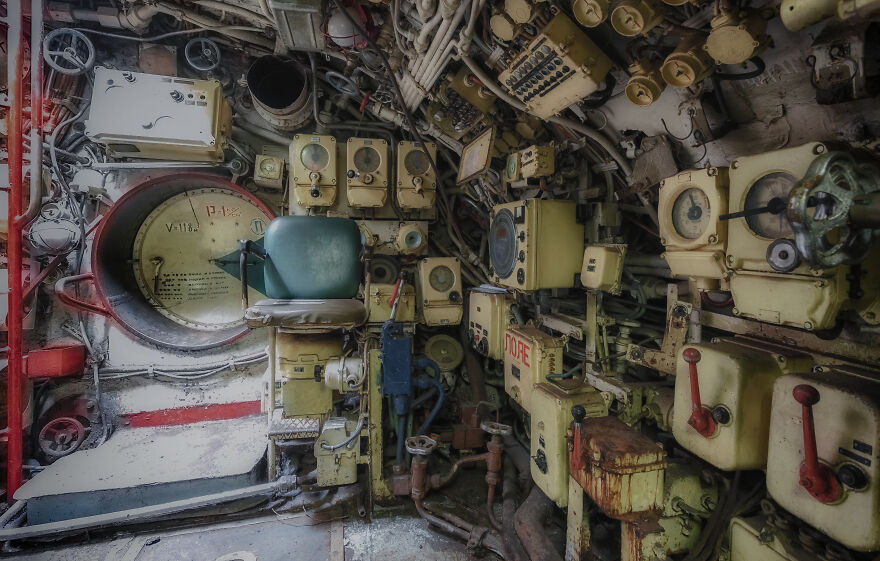
Command periscope
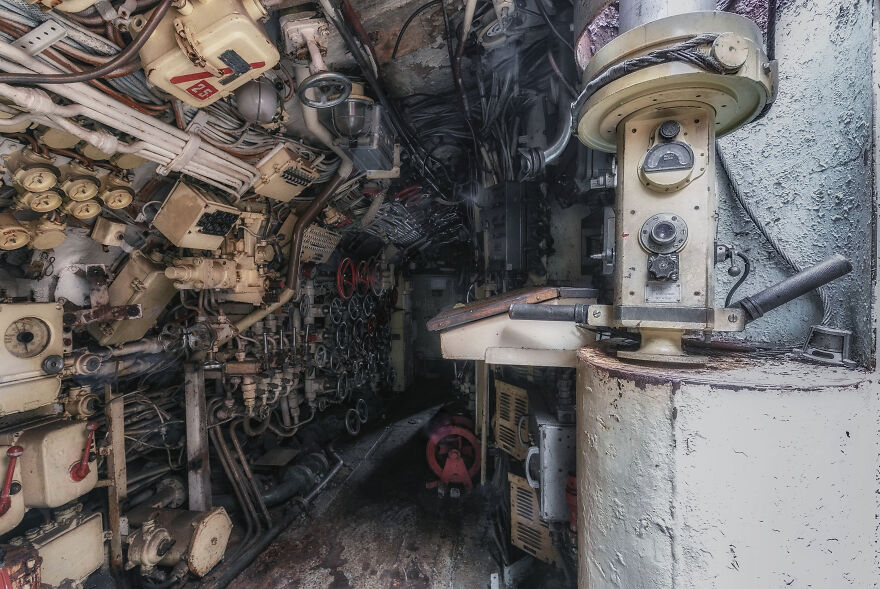
Command seat
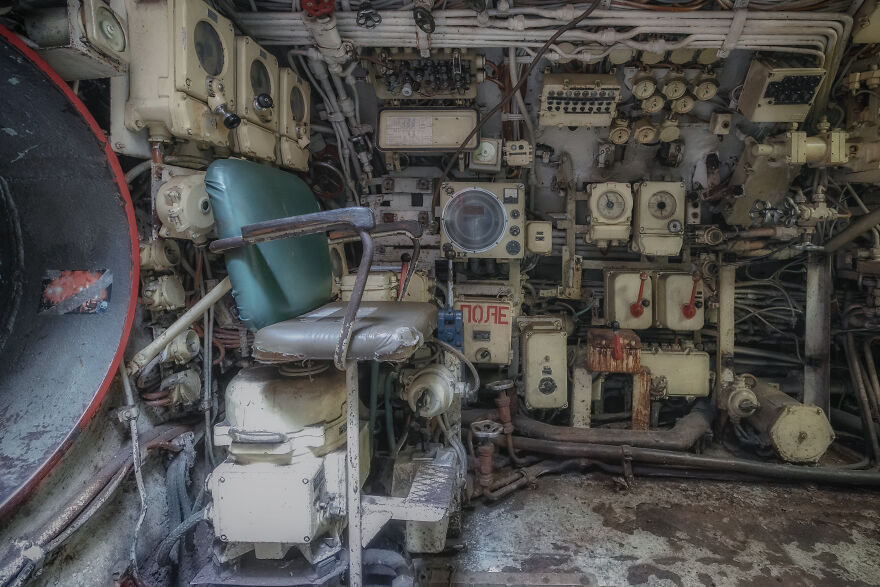
Electric generator/motor controls
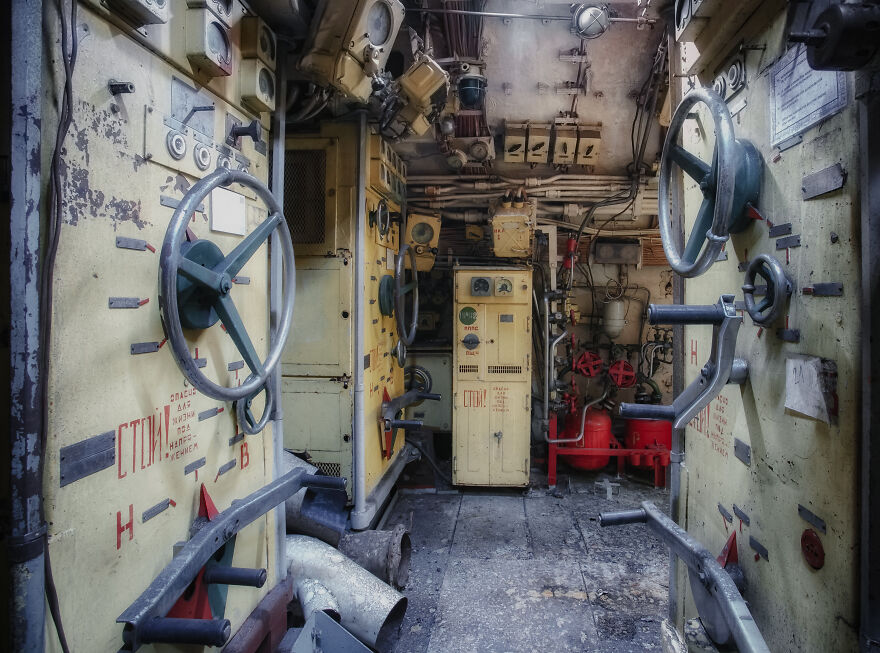
Motor control
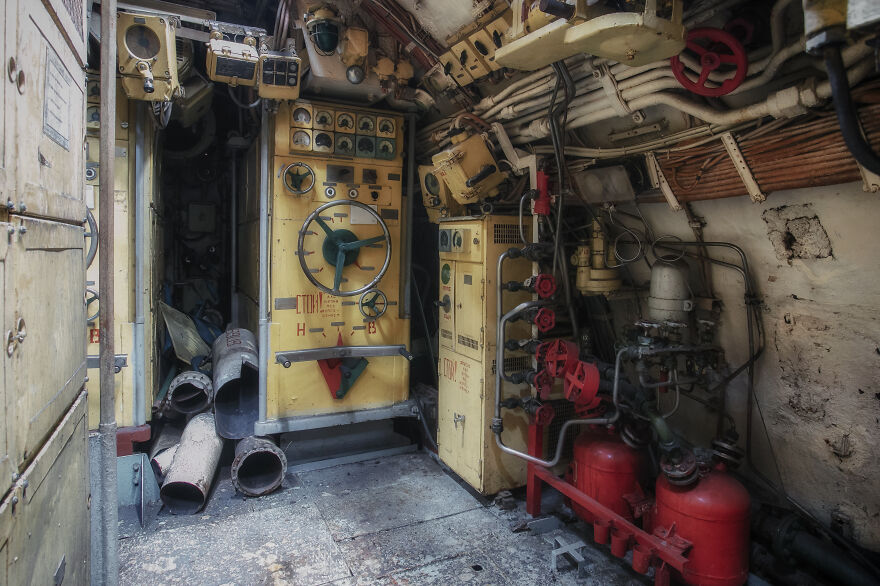
Chief mechanic’s workplace
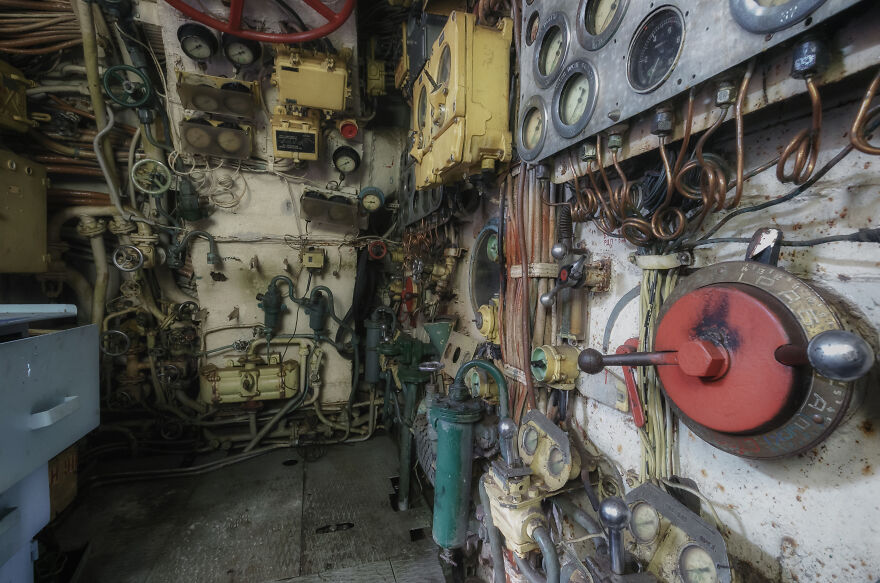
The bow compartment
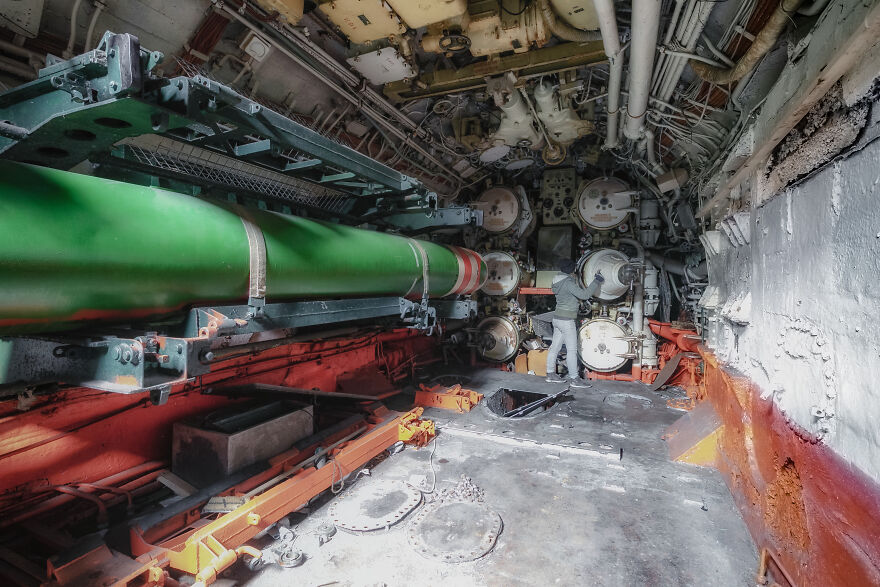
“Climbing and crawling, in the end, we could finally reach the bow compartment. Here, six more torpedo tubes greeted us along with a huge dummy torpedo. This submarine was capable of carrying a total of 22 torpedoes, ten of which were in the tubes, and another twelve were waiting for their placement into the tubes. The crew could sleep here next to the torpedoes, but when the submarine was fully armed, this room became as cramped as everywhere else in the submarine. Now the torpedo-free bow room easily became the largest submarine compartment.”
A huge dummy torpedo
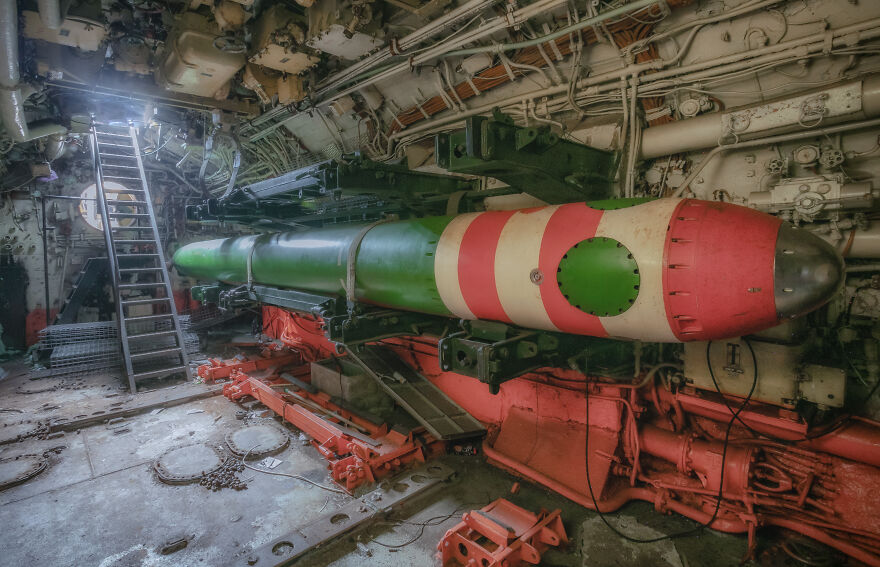
Spare torpedo with torpedo tubes
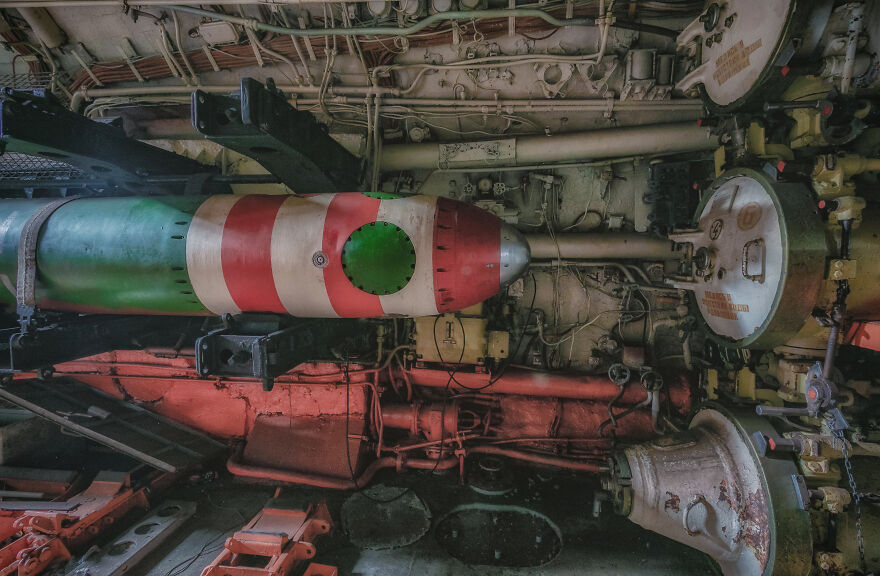
Unfortunately, at the time that we visited the submarine, part of the hull was already cut off, there were huge holes in it, and the equipment was partly removed or damaged.
After her 30 years of service, she was subsequently cut into scrap metal. Pity… but nothing to do. Anyway, it was one of the most spectacular explorations ever. We really enjoyed it.
Latrine
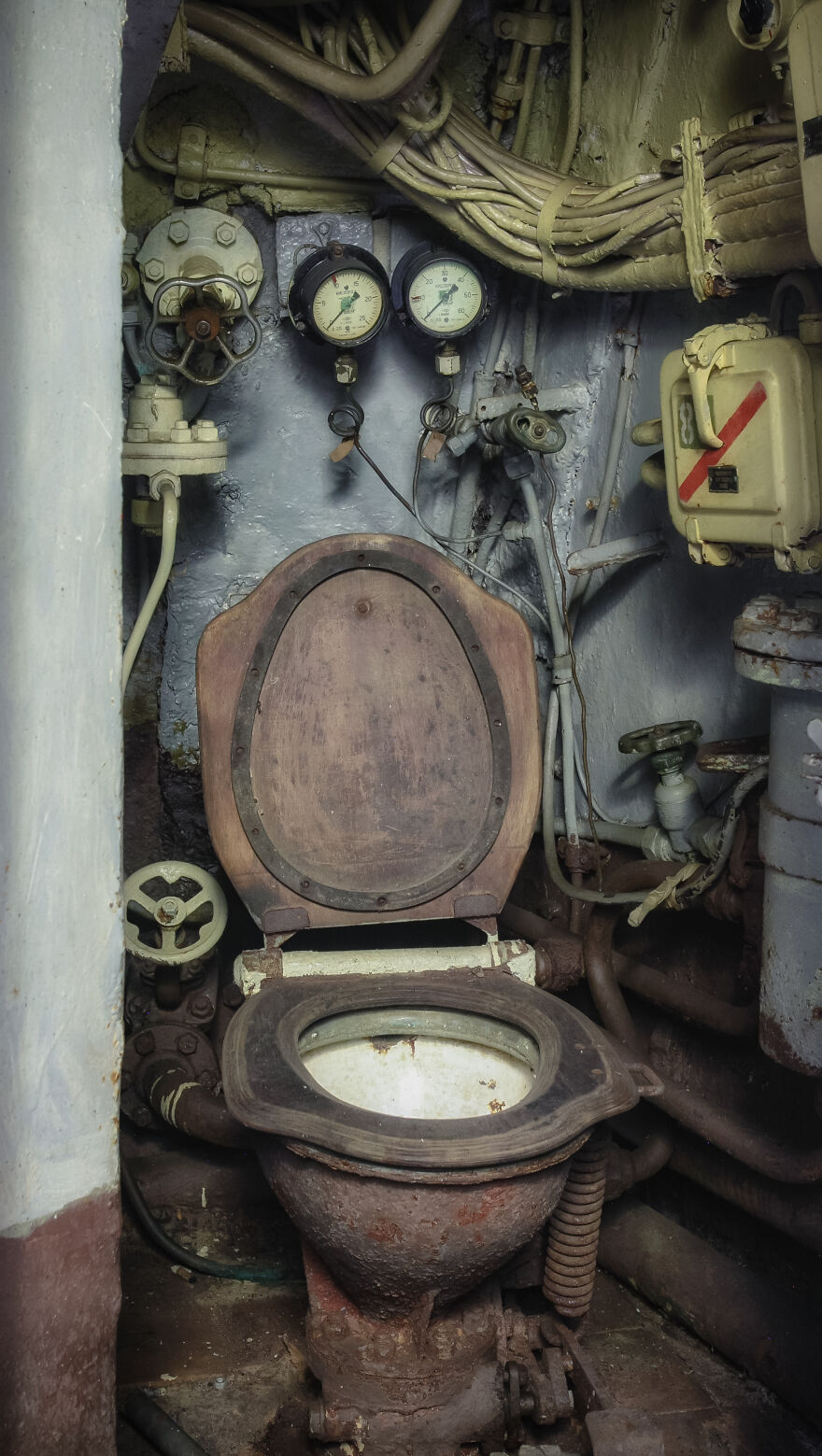
Ballast tank management compartment
